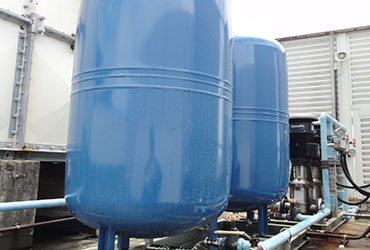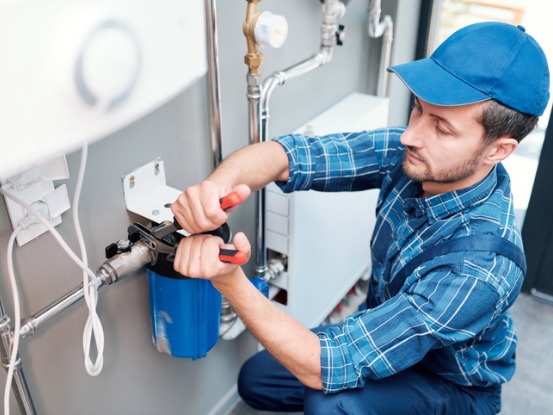Swift Solutions for Reduced Water Pressure in Your Home
Swift Solutions for Reduced Water Pressure in Your Home
Blog Article
We have encountered this article involving 9 Reasons for Low Water Pressure in Your House down the page on the internet and figured it made sense to share it with you on my blog.

Low tide pressure in your home can be an aggravating problem, influencing every little thing from showering to washing recipes. If you're experiencing weak water circulation, there are a number of possible causes and services to check out. In this overview, we'll review typical factors for low water pressure and useful actions to address the issue successfully.
Intro to Low Water Pressure
Low tide stress happens when the circulation of water from your taps, showers, and various other fixtures is weak than normal. This can make daily tasks much more challenging and much less efficient. Recognizing the causes of low water pressure is critical to discovering the right service.
Usual Causes of Low Tide Stress
Pipeline Obstructions
In time, pipes can end up being obstructed with mineral deposits, sediment, or debris, limiting the circulation of water. This is a common problem in older homes with galvanized steel pipelines.
Rust
Corrosion within pipelines can result in leaks and decreased water stress. Rust buildup can restrict water flow, especially in aging plumbing systems.
Faulty Pressure Regulatory Authorities
Stress regulatory authorities are responsible for maintaining consistent water pressure in your house. If they malfunction, it can cause low water pressure or uneven flow throughout your house.
Metropolitan Water Issues
In some cases, the trouble exists outside your home. Municipal water supply issues, such as main line leaks or maintenance work, can temporarily reduce water pressure in your location.
Exactly How to Detect Low Water Pressure
Examining Faucets and Fixtures
Start by evaluating the water pressure at various taps and fixtures throughout your home. If the concern is separated to specific areas, it may indicate local problems.
Examining Pipes
Check noticeable pipelines for signs of leakages, deterioration, or blockages. Focus on any kind of uncommon audios, such as banging or rattling pipelines, which could suggest problems within the plumbing system.
Consulting with a Plumber
If you're incapable to identify the source of low tide stress, take into consideration employing an expert plumber to carry out a comprehensive evaluation. They can determine underlying concerns and suggest proper services.
Do It Yourself Solutions to Take Care Of Low Tide Pressure
Cleaning Aerators and Showerheads
Mineral deposits can accumulate in aerators and showerheads, lowering water circulation. Remove and clean these components routinely to improve water pressure.
Flushing Hot Water Heater
Debris build-up in the hot water heater can limit flow and lower efficiency. Purging the tank regularly aids get rid of sediment and keep optimal efficiency.
Checking Stress Regulator
Ensure that the pressure regulatory authority is functioning correctly. Adjusting or changing the regulator can assist restore correct water pressure throughout your home.
Clearing Clogs in Pipes
For small clogs, attempt utilizing a plumbing serpent or chemical drain cleaner to clear blockages in pipelines. Be cautious when using chemicals and comply with safety and security standards.
When to Call a Professional Plumber
If DIY initiatives stop working to deal with the concern or if you suspect substantial plumbing troubles, it's ideal to seek support from a qualified plumber. They have the know-how and tools to resolve complex concerns securely and efficiently.
Preventive Measures to Keep Water Pressure
Normal Maintenance
Set up regular maintenance for your plumbing system to stop concerns such as corrosion, leaks, and clogs. Dealing with small troubles early can aid avoid even more significant repair services later.
Installing a Stress Booster
Consider setting up a stress booster pump to boost water pressure in areas with consistently low circulation. This can be particularly helpful for multi-story homes or properties with high-demand fixtures.
Tracking Water Usage
Be mindful of water use behaviors and stay clear of ill-using the plumbing system. Easy modifications, such as shocking showers and laundry loads, can assist maintain appropriate water stress.
Final thought
Taking care of low tide pressure can be aggravating, yet recognizing the underlying reasons and executing proper solutions can bring back optimum flow throughout your home. Whether it's cleaning up aerators, evaluating pipes, or seeking advice from a plumber, taking aggressive actions can make sure a steady supply of water for your everyday demands.
FOUR WAYS TO FIX LOW WATER PRESSURE NOW
Turning on a shower or faucet only to find the water comes out in a sad, slow drizzle is never a good feeling. How exactly are you supposed to wash a pan or take a quick shower when it takes 10 minutes just to rinse off a little soap? The good news is that when your water pressure is bad, there's always a cause: typically one that can be easily fixed. Here are some of the most common causes of low pressure and what you can do to fix the issue:
DEBRIS AND MINERAL DEPOSIT BUILDUPS
If you notice low water pressure from just one or two of the fixtures in your house, the problem likely has to do with debris buildup. Water is full of minerals and other debris, all of which can accumulate in your pipes and on your fixtures. This can cause a blockage that affects how much water flows through. To fix this, try filling a small plastic bag with white vinegar, and use a rubber band to hang it around your showerhead or faucet. Let the head of the fixture soak for a few hours, and the vinegar should loosen the deposits.
WATER LEAKS
Leaks are another common cause of low water pressure. If water is flowing out of your plumbing through a hole or crack before it can reach your fixture, the pressure coming out of the faucet or showerhead will be lower. A plumbing professional is your best bet for finding and repairing a leak in your water supply pipes.
Leaks are another common cause of low water pressure. If water is flowing out of your plumbing through a hole or crack before it can reach your fixture, the pressure coming out of the faucet or showerhead will be lower. A plumbing professional is your best bet for finding and repairing a leak in your water supply pipes.
FOUR WAYS TO FIX LOW WATER PRESSURE NOW
Turning on a shower or faucet only to find the water comes out in a sad, slow drizzle is never a good feeling. How exactly are you supposed to wash a pan or take a quick shower when it takes 10 minutes just to rinse off a little soap? The good news is that when your water pressure is bad, there's always a cause: typically one that can be easily fixed. Here are some of the most common causes of low pressure and what you can do to fix the issue:
DEBRIS AND MINERAL DEPOSIT BUILDUPS
If you notice low water pressure from just one or two of the fixtures in your house, the problem likely has to do with debris buildup. Water is full of minerals and other debris, all of which can accumulate in your pipes and on your fixtures. This can cause a blockage that affects how much water flows through. To fix this, try filling a small plastic bag with white vinegar, and use a rubber band to hang it around your showerhead or faucet. Let the head of the fixture soak for a few hours, and the vinegar should loosen the deposits.
WATER LEAKS
Leaks are another common cause of low water pressure. If water is flowing out of your plumbing through a hole or crack before it can reach your fixture, the pressure coming out of the faucet or showerhead will be lower. A plumbing professional is your best bet for finding and repairing a leak in your water supply pipes.
Leaks are another common cause of low water pressure. If water is flowing out of your plumbing through a hole or crack before it can reach your fixture, the pressure coming out of the faucet or showerhead will be lower. A plumbing professional is your best bet for finding and repairing a leak in your water supply pipes.
A VALVE ISSUE
If you have low water pressure throughout your home, check your main shut-off valve to make sure it's completely open. You may also want to see if there's a pressure-reducing valve installed. If there is, have a plumber help you adjust the settings to get the pressure you're looking for.
OTHERS USING WATER
Believe it or not, your low water pressure could be caused by your neighbors. If you notice low pressure at certain times of day, it may be because you and the people living next to you have similar schedules - when everyone is showering at the same time, the pressure will be lower in every home. Low pressure throughout the neighborhood may also be caused by an issue with your municipal water supply. If that's the case, call the supplier to see if they're working on the issue.
https://www.rotorooter.com/blog/water-leaking/low-water-pressure-fixes/

Do you really like more info about Low Water Pressure in the House?? Post a remark below. We'd be delighted to hear your opinions about this piece. Hoping that you come back again in the future. Are you aware of another person who is interested by Low Water Pressure in the House?? Feel free to promote it. We appreciate reading our article about .
Click Here Report this page